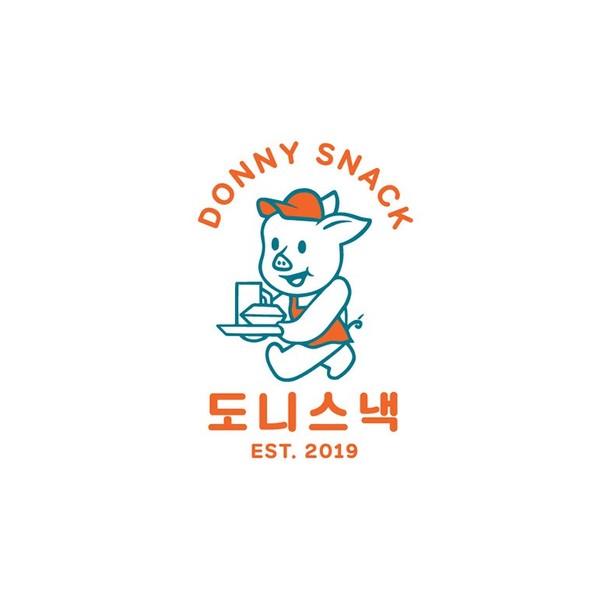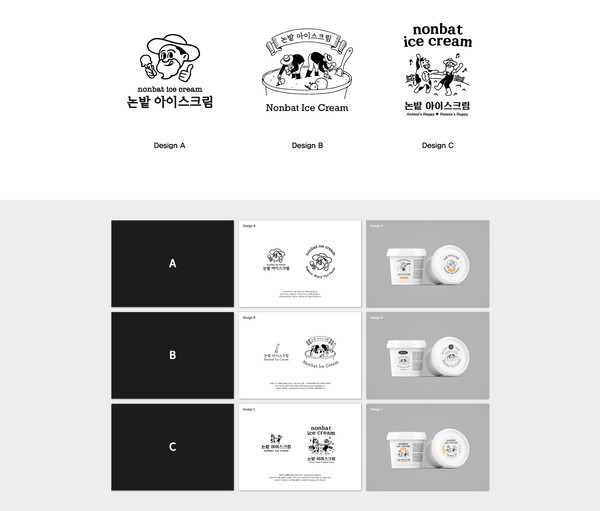Creating your identity with branding

LOGOS ALLOW us to recognize and differentiate brand products and companies from one another. Every logo has its own story, and it is up to art directors to come up with these creative concepts using the company's goals and visions. The Yonsei Annals interviewed Snil Yom, an art director who has been operating his creative art & design studio Studioflatflag in Euljiro, Seoul, since 2017. Yom shares his personal experience on what it is like to be an art director and what branding entails.
Annals: What do you do as an art director?
Yom: Designers are divided into three roles: illustrators, graphic designers, and art directors. I've gone through all three throughout my career. Graphic designers conceptualize the designs by using illustrations and stories, and illustrators draw out the designs. Usually, art directors are the ones who lead a team. Art directors have to look after crew members, ensuring no one falls behind by providing feedback and supervising them. It requires the concentration and contribution of every staff member like a football team. Also, the distribution of human resources and assignment of designing tasks is the art director's main responsibility. The design industry is all about ideas, so it is important to know how to utilize and manage them.
Annals: What made you become an art director?
Yom: After my junior year majoring in visual design, I worked in a gaming company as an exemption from Korean military service. Fortunately, by the time I finished my service, I had an opportunity to go to Japan and work in NCsoft Japan and NaverJapan as a graphic designer and an art director. I mostly promoted products and designed game packages for the game market. Although I was at first passionate about my job, I found myself stuck in a cycle. Doing the same thing every day and designing simple things were not what I desired. I wanted to think outside the box, so I left that job. I then came back to Korea to focus more on what I value in design and my signature character “HAFY,” which is an embodiment of my values to become a “Happy Artist For You.” It’s my motto in design, and I have it tattooed on my finger.
Annals: How would you define “branding” and where do you often get inspiration?
Yom: These days, there are too many types of companies that sell the same products, so establishing your own identity through a clear, unique logo is very important. Hence, as art directors, we are always looking for ways to broaden our source of inspiration. You can get inspiration from traveling as you get to experience different cultures. Our studio crew members and I used to travel together every vacation to gain inspiration. For example, people watch the sunset at Boracay and just admire its beauty, whereas I think of ways to create a brand design using the colors presented in front of me. But because of COVID-19, I recommend watching documentaries on biology, and sociology. Understanding how plants or countries got their names can help you with the basics of branding. Every creation has its origin, and so does art.
Annals: When were you the proudest working as an art director?
Yom: During my earlier years, clients used to bring tons of references from other brands when they came to me because I did not have my own form of branding designs. Now that my portfolio has started building up, clients now prefer choosing among our own set of designs. This change in preference helps me both specify drawing styles and reflect my taste into the client's request. Although it took a while to gain confidence when presenting my design, it was memorable when I established my own design identity.
Moreover, while art directors set up projects as an entire team scale, we contribute the same amount of time to our individual artworks. I specialize in pottery, comics, graphic designs, installation art, painting, carpentry and even fashion designs. Expressing my artistic worldview through various ways and having an opportunity to showcase my pieces to the public is what enriches me both as an artist and an art director.
Annals: What is the most important thing to consider during production?
Yom: In order to satisfy clients and avoid any conflicts, communication is essential. Since the design process is always tough, I try to spend most of my time fully understanding my clients’ requests. I have them fill out a survey to gauge their expectations. For example, if they want me to redesign their brand, I would like to know which parts need modifications and photos for reference. Then I take a look at these samples, scribble down the common features I am most likely to find, and get a rough design to confirm with my clients. This process repeats about three to four times until I get the full idea, and then we edit based on the clients’ feedback. Narrowing down the scope of designs and minimizing the errors is our number one priority.
Annals: What was the most impressive project so far?
Yom: In 2018, I rebranded the logo for Donggas Market, which sells pork cutlets. It is a logo with a pig holding pork in its hand. Many clients find our studio unique because we try to match the logo with its products by creating a general storyboard for companies. After all, the owner of Donggas Market told me the logo looks just like her husband. They then started a second restaurant and wanted me to design their brand again. Watching projects leading to success twice in a row was a huge motivation for me to take further steps in design. Art, including branding, is valued when its audience appreciates the meaning beyond its image. I feel proud not only as an art director but as an artist whenever customers are satisfied.


Annals: What kind of skills do you need as an art director?
Yom: Since an art director leads the team, you should be able to speak the client’s language and communicate clearly. Ever since I launched my own design studio, branding exposed me to clients from different countries. Mimicking the trend is merely an alternative to a design, but understanding the entire context is totally a different matter. You can get inspiration from trendy things, but you should be able to put in your personal touch. This encourages me to be updated in every aspect, especially in culture. Whenever it comes to our first meeting with the clients, there are many variables to consider—from individual tastes to cultural backgrounds. Understanding the clients’ culture and targeting specific consumer groups is the basic step you should take before communicating with clients to present suitable design ideas.
Annals: What were the difficulties you faced as an art director? How did you overcome it?
Yom: When first working as an in-house designer[1], it took me a long time to establish an organized finance structure for myself and our studio. It was difficult to attract clients at first because we had no prior work to show them to ensure quality work. We started small by making money irregularly and looked for design commissions to find potential clients. At that time, it was like clutching at straws. But now, Studioflatflag is collaborating with social ventures, cafes, and art fairs. Looking back, going through that experience had me fully prepared for the future, and that's what shaped our studio's reputation.
Satisfying clients is also a challenging task. There used to be cases where clients would suddenly cancel their design request at the very end of the production. From then, the entire contract gets complicated. Compared to the size of the logo, the amount of resources going into the project takes up a lot of energy and time, which is unfavorable for both our clients and us. When I first started my studio, I had no choice but to start over because this was a new experience for me. It took all night sometimes to revise and come up with something new. Now, we no longer accept additional changes for these situations. Instead, we systemized a '3 Designs' procedure to avoid committing errors, where we suggest three different designs for our clients to choose from. This reduces the possibility of starting all over again.

Annals: Do you have any advice for students who want to be art directors?
Yom: Always try to go above your limit. How you view the world determines your creativity. You can overcome your creative block by constantly trying photoshop, studying illustrations, going to exhibitions during your spare time, being involved in collaborative design projects, and continuously updating your own portfolio. Apart from designing and making products, research what other designers have done. The best lesson is to learn from others’ mistakes. It solely depends on how much effort you put in to become a skillful art director and, lastly, enjoy what's in front of you!
[1] In-house designer: A designer who works in a company unrelated to design but has its own design department, not outsourcing to any other agencies

